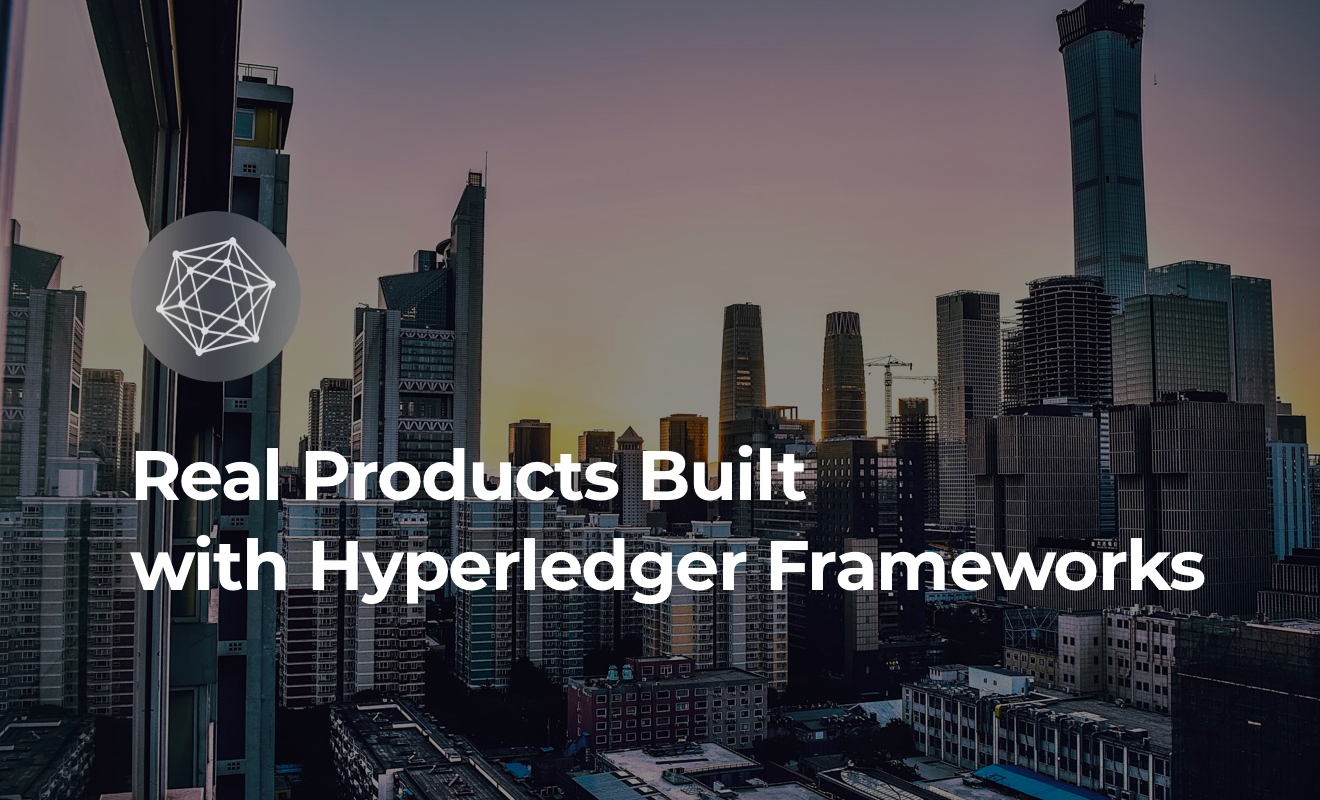
How the Consortium Blockchain Works
September 25, 2019
Corda and Real Businesses Built on Top of This Framework
August 23, 2019
Category: hardware
An abbreviation for “Application Specific Integrated Circuit.” Often compared to GPUs, ASICs are specifically designed for mining and may offer significant power savings.
Category: cryptocurrency
Bitcoin is the first decentralised, open source cryptocurrency that runs on a global peer to peer blockchain, without any middlemen or a centralised issuer.
Category: code
Blocks are packages of data that are permanently recorded on blockchain.
Category: software
A blockchain is a shared ledger where transactions are permanently recorded by adding blocks. The blockchain serves as a historical record or chain of all transactions that ever took place, from the genesis block to the most recent block, hence known as “blockchain”.
Category: software
Block explorer is an online tool for reviewing all transactions, past and current, on the blockchain. It exists for easier reading of blockchain and pulling data directly from it: thus, we can check if the blockchain is valid or not. In addition, block explorer offers helpful information such as network hash rate and transaction growth.
Category: property
The number of blocks of a single blockchain.
Category: cryptocurrency
A form of incentive for the miner who successfully calculates the hash in a block during mining. Verification of transactions on the blockchain generates new coins, and the miner gets them as the reward in the process.
Category: software
A ledger maintained by a central party.
Category: software
The successful act of hashing a transaction and adding it to the blockchain.
Category: software
Consensus is achieved when all participants of the network agree on the validity of the transactions, ensuring that the ledgers are exact replicas of each other. Read more on consensus protocols in our extensive post.
Category: cryptocurrency
It is a digital currency which is cryptographically encrypted and usually decentralized. Tokens represent this virtual asset. Our post about national cryptocurrencies explains what is the difference between common virtual currencies and crypto.
Category: software
Often referred to as Ðapp, dApp or decentralised application, DApp is an application that is open source, operates autonomously, stores data on a blockchain and has incentives in the form of utility tokens. DApp performs on a protocol that shows proof of value.
Category: community
Decentralised Autonomous Charity — a type of DAO, the purpose of which is solely non-profit activity. DACs like Giveth strive to automate the donation process, making it more efficient and transparent.
Category: smart contract
Decentralised Autonomous Organization was conceived as a corporation run without any human intervention. DAO surrenders all forms of control to a deterministic set of business rules written in the code before its launch.
Category: software
Distributed ledgers are ledgers in which data is stored across a network of decentralized nodes. A distributed ledger does not have to have its own currency and may be permissioned and private.
Category: software
Distributed Ledger Technology or DLT is a general name for a class of technology that relies on distributed ledgers and cryptography. Blockchain is an example of DLT.
Category: software
A type of network where processing power and data are shared across nodes rather than possessed by a centralised server or entity.
Category: software
A digital code generated by public key encryption which is attached to a document transmitted electronically. Digital signature verifies the contents and the sender’s identity.
Category: software
Double spending is a situation when a sum of money is spent more than once. It can happen with electronic money, including cryptocurrencies. Therefore, they have to solve this issue with help of different consensus protocols.
Category: smart contract
It is a token standard developed by Ethereum community for interoperability with tokens of other projects. ERC223 and ERC721 are additional types of the token standard on the Ethereum network. ERC827 is one of the latest improvements to ERC20. It is 100% compatible with ERC20. Read our blog post Blockchain Development: Is it Too Hard?
Category: blockchain
Ethereum is a blockchain-based decentralised platform for apps that run smart contracts, and is aimed at solving issues associated with censorship, fraud and third party intervention. Read why Ethereum will only get stronger.
Category: software
The Ethereum Virtual Machine (EVM) is a Turing complete virtual machine that lets anyone perform arbitrary EVM Byte Code. Each Ethereum node operates on the EVM to maintain consensus across the blockchain.
Category: software
To fork means to create an alternative version of the existing blockchain, leaving two blockchains to act simultaneously on separate parts of the network.
Category: software
The very first block on a blockchain. Heavily coded, it includes all the primary settings a blockchain needs. Each of the following blocks in the blockchain will always refer down to the genesis block.
Category: software
A type of fork that renders previously invalid transactions valid, and vice versa. This type of fork requires all nodes and users to upgrade to the latest version of the protocol software.
Category: cryptography
The act of performing a hash function on the output data. This is used for confirming coin transactions.
Category: cryptography
Cryptographic hashes produce a fixed-size and unique hash value using a variable-size transaction input. The SHA-256 computational algorithm is an example of a cryptographic hash used in Bitcoin. Other examples are Ethash in Ethereum, Scrypt in Litecoin, and CryptoNight in Monero.
Category: property
Measurement of efficiency for the mining rig expressed in hashes per second.
Category: consensus protocol
A hybrid PoW+PoS allows for both Proof of Work and Proof of Stake as consensus algorithms on the network. In this method, a balance between miners and voters (holders) may be achieved, creating a system of community-based governance by both insiders (holders) and outsiders (miners).
Category: algorithm
Mining is a procedure of validating blockchain transactions. The necessity of validation guarantees an incentive for the miners, usually in the form of tokens. With increasing demand, mining can be a lucrative business when done properly. By choosing the most efficient and suitable hardware and mining target, mining may produce a stable form of passive income.
Category: smart contract
Multi-signature addresses provide an added layer of security by requiring more than one key to authorize a transaction.
Category: software
A copy of the blockchain operated by a participant of the chosen network.
Category: software
Oracle works by connecting the real world and blockchain and providing data to the smart contracts.
Category: property
Peer to Peer (P2P) refers to the decentralized interactions between two parties or more in a highly-interconnected network. Participants of a P2P network deal directly with each other through a single mediation point. Notably, if you represent this point and store user data, you might need to comply with new privacy rules like GDPR.
Category: cryptography
A public address is the cryptographic hash of a public key. It acts as an email address that can be published anywhere, unlike private keys.
Category: cryptography
A private key is a string of of alphanumeric characters that lets you access the tokens in a specific wallet. It acts as a password which is hidden from anyone but the owner of the address.
Category: consensus protocol
A consensus algorithm that rewards earnings based on the number of coins you own or hold. The more you invest in the coin, the more you gain by staking with this protocol. This protocol is rather about “minting” new tokens than “mining.”
Category: consensus protocol
A consensus algorithm that requires an active role in producing or “mining” data blocks. The process often consumes resources such as electricity. The more “work” you perform, the more coins you get as a reward. The “work” refers to the amount of computational power you provide. Difficulty means how easily a data block with transactions can be mined successfully.
Category: process
Sharding is a process of dividing a large, monolithic data set into horizontal partitions, or shards. Each shard has the same data schema, but holds its own data subset. Sharding brings many benefits in terms of load and input/output performance.
Category: software
Smart contracts encode definitive rules in a programmable language onto the blockchain and are enforced by the participants of the network. Using the “if-then” structure they allow automating a business and other applications.
Read an in-depth explanation of the Smart Contracts.
Category: software
A soft fork is also an update to the system. However, it requires most miners upgrading in order to enforce, while a hard fork requires all nodes to agree on the new version. Since old nodes recognize the new blocks as valid, a soft fork is essentially backward-compatible.
Category: software
Solidity is a programming language for developing smart contracts on Ethereum.
Category: software
A test blockchain that developers use to prevent expending assets on the main chain.
Category: software
A collection of transactions gathered into a block that can then be hashed and added to the blockchain.
Category: cryptocurrency
All cryptocurrency transactions incur a small transaction fee. These fees add up to account for the block reward that a miner receives when he or she successfully processes a block.
Category: property
Turing complete refers to the ability of a machine to run calculations that any other programmable computer is capable of. An example of this is the Ethereum Virtual Machine (EVM).
Category: software
A file that stores private keys. It usually contains a software client which lets one view and create transactions on a particular blockchain.


